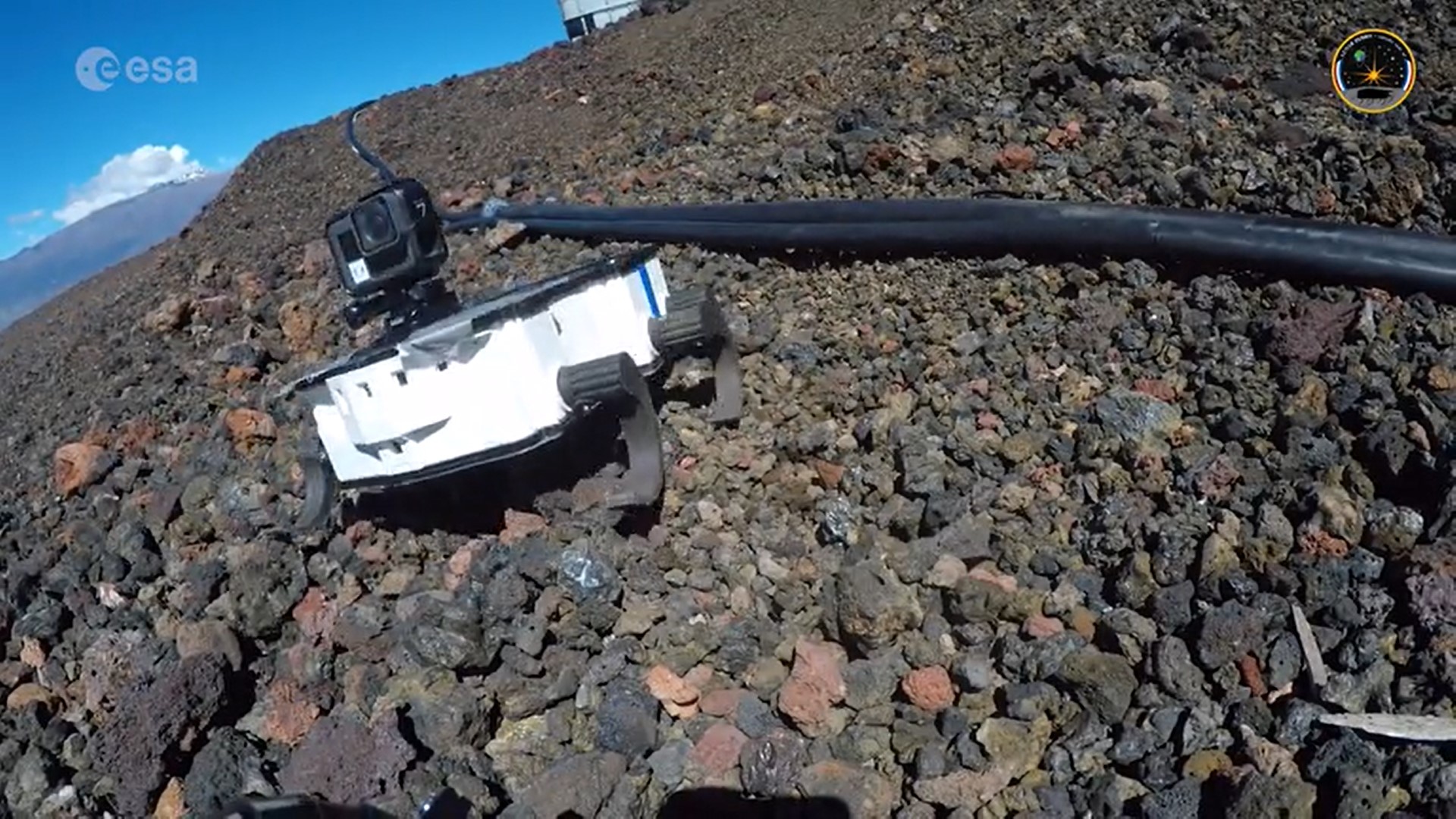This tiny moon rover has a leg up on traditional spacecraft designs
Lunar Zebro will be the world's smallest moon rover — just the size of a sheet of paper.
Students at the Delft University of Technology (TU Delft) in the Netherlands are developing the world's smallest and lightest moon rover, called Lunar Zebro.
Named after the Dutch phrase for "six-legged," Lunar Zebro will indeed have six legs instead of wheels, allowing it to climb taller obstacles on the moon than its wheeled counterparts can overcome. The rover will be the size of a standard sheet of paper and weigh about 5.5 pounds (2.5 kilograms).
"The most unique feature of the Zebro is its locomotion, of course, which is done using C-shaped legs based on the RHex project from the University of Pennsylvania," Simon J. Stenger, the project's chief engineer, said in a video about the project. "This enables the rover to traverse difficult terrains without getting stuck."
Related: Every mission to the moon
The project has been in the work for the better part of a decade, although it started with Earthbound implications. The Zebro Group was founded in 2013 with the goal of developing a "flexible and inexpensive alternative to the big and complex rover platforms we normally see around the world," according to Maneesh Kr. Verma, Zebro Group head of operations. But the group didn't set its lunar ambitions until 2017.
Now, the team hopes to send one rover to the moon in the coming years for a technical demonstration lasting one lunar day, or 14 Earth days. That mission would also include a science payload: a sensor to measure radiation on the moon.
Ultimately, the team hopes that Lunar Zebro would be able to operate in insect-like swarms. "With a swarm like this, we could explore caves and other risky terrains where a conventional rover might not dare to go," Verma said. "Also, searching for specific features or things becomes easier since a swarm can cover a much larger area at once."
Breaking space news, the latest updates on rocket launches, skywatching events and more!
Size, method of movement and swarm capabilities aside, Lunar Zebro also stands out because it is an all-student project. "Since the inception of the project in 2017, almost 120 students have now been a part of the project, and this is their legacy," said Prachi Sachdeva, Lunar Zebro head of partner relations.
And of course, the rover would join the select ranks of successful missions to the lunar surface. To date, only the U.S., Soviet Union and China have executed soft landings on the moon, although a host of nations is looking to notch the milestone in coming years. "The Lunar Zebro will be not only the first Dutch mission to land on the moon, but also the first European."
Follow Stefanie Waldek on Twitter @StefanieWaldek. Follow us on Twitter @Spacedotcom and on Facebook.

Space.com contributing writer Stefanie Waldek is a self-taught space nerd and aviation geek who is passionate about all things spaceflight and astronomy. With a background in travel and design journalism, as well as a Bachelor of Arts degree from New York University, she specializes in the budding space tourism industry and Earth-based astrotourism. In her free time, you can find her watching rocket launches or looking up at the stars, wondering what is out there. Learn more about her work at www.stefaniewaldek.com.

